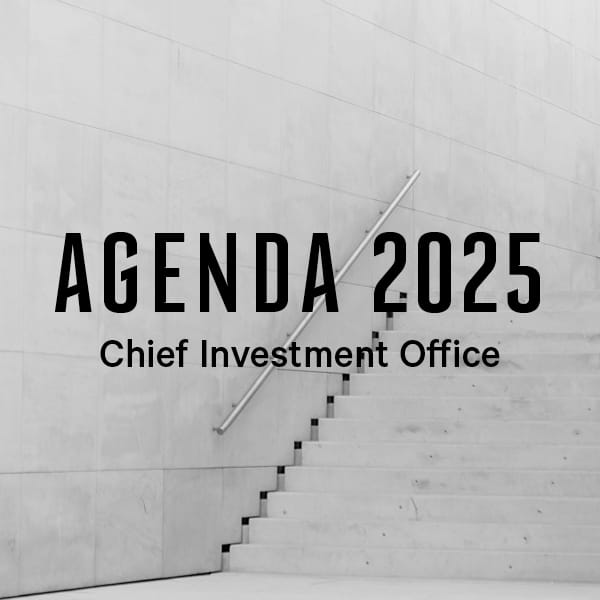-
Overview
2024 was a year for cyclical sectors and technology stocks. Returns were once again narrowly concentrated in a handful of stocks. The rate hiking cycle that began in 2022 transitioned to a rate cutting cycle in 2024 beginning with the Bank of England in August. By year-end, seven out of the twelve major developed market central banks had cut interest rates. Over the year, monetary policy was eased by at least 825 basis points making it the largest annual easing cycle since 2009.
The rate cutting cycle will continue in 2025 but at a slower pace. This will be particularly beneficial for small to medium-sized companies, less so for large companies, where net interest payments are already at near record-low levels.
We remain positive on equities, particularly in the US where earnings are expected to grow by 15% compared to 10% last year.
Big technology companies remain lucrative cash machines. Apple is still on top, creating over $100 billion of free cash flow in the past year. A major use of Apple’s cash is returning value to shareholders through share buybacks and dividends. Microsoft is also an established dividend payer. Alphabet, Nvidia and Meta all paid dividends for the first time in 2024.
Some of this cash will also be used to invest. Microsoft has announced plans to spend $80 billion in capex in 2025, more than half of which will be in the US.
The big tech cash generators (Trailing 12 month free cash flow US$ bn)

Source: Bloomberg, data as at 5/12/24
—
8.25% – The amount monetary policy was eased in 2024 making it the largest annual easing cycle since 2009.
Reuters
—
Japan will be in focus for investors in 2025. Two things have changed recently. Inflation has finally come back after decades of deflation. And investor activism and encouragement from the Japan Stock Exchange has increased pressure on listed companies to be better allocators of capital. Nearly half of Japanese companies have net cash on their balance sheet compared with a fifth of companies in the US. High cash and low debt positions means interest expense is low. More than a third trade below their book value as a result, compared to around 5% for US companies.
% of companies with net cash

Source: Compustat, data as at April 2024
—
US$655bn –The amount of stock Apple has bought back over the past 10 years.
Bloomberg
—
Interest expense / EBIT

Source: Compustat, data as at April 2024
—
Elsewhere, we are selective on emerging markets. China continues to suffer under the weight of high debt levels, a housing overhang where consumers are 70% levered to the property market, and softening domestic demand. Our preference remains India given its relatively healthy consumer sector, a business-friendly government and the benefits flowing to it from the re-design of global supply chains.
Europe bears watching for significant policy shifts that could present opportunities. Germany’s stagnating economy is burdened by poor productivity, high energy costs, and weak export demand, particularly from its major trading partner China. France is grappling with rising bond yields due to fiscal pushback. Both also face political challenges from the right that could see the union as a whole come under the
kind of pressure it faced during the 2011 sovereign debt crisis.Valuations will be the biggest challenge in 2025. The long-term decline in bond yields, which has been a key source of support, has come to an end. Investors should be prepared for bouts of volatility as the market transitions to a new, higher yield environment.
—
70% – The amount of household wealth in China invested in property.
Reuters








